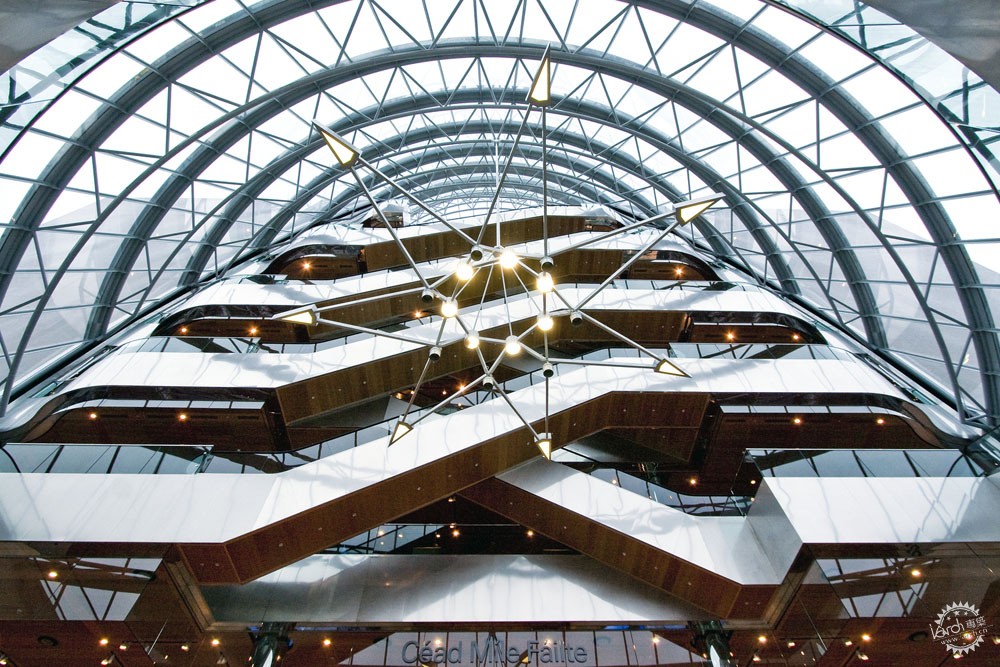
National Conference Center, Dublin, Ireland, 2010 © Kevin Roche John Dinkeloo and Associates
凯文·洛奇:“形式如同音乐,你试着创作,旋律便已出现”
“Form-Generating is Similar to Music – You Try to Compose Music and Suddenly the Melody Comes”: In Conversation with Kevin Roche
由专筑网李韧,王雪纯编译
美国建筑师凯文·洛奇于3月1日去世,享年96岁。凯文·洛奇于1922年在爱尔兰都柏林出生,毕业于都柏林大学(1945)、伊利诺工学院(1948))。1966年,他成立了自己的事务所Kevin Roche John Dinkeloo and Associates (KRJDA)。这位建筑师设计了至少200座建筑,其中包括2012年大都会艺术博物馆、2010年都柏林国家会议中心、2009年华盛顿拉斐特大厦、1992年马哈顿J.P. Morgan总部大楼、1968年曼哈顿Ford基金会、1966年加利福尼亚Oakland博物馆。在1982年,他成为第四届普利兹克建筑奖获得者,并且于1993年获得了AIA金质奖章。下文是2011年我们对于他的采访记录。
American architect Kevin Roche passed away this past Friday, March 1 at the age of 96. He was born in 1922 in Dublin, Ireland, educated at the University College Dublin (1945) and Illinois Institute of Technology (1948). In 1966, he formed Kevin Roche John Dinkeloo and Associates (KRJDA). He has designed more than 200 buildings, including renovation to the American Wing at the Metropolitan Museum of Art (2012), National Conference Centre in Dublin (2010), Lafayett Tower in Washington DC (2009), J.P. Morgan Headquarters in Manhattan (1992), Central Park Zoo in Manhattan (1988), The Knights of Columbus Building Headquarters in New Haven (1969), The Ford Foundation in Manhattan (1968), and Oakland Museum of California (1966). In 1982 he became the fourth Pritzker Prize winner and in 1993 was awarded the AIA Gold Medal. The following excerpt is from our 2011 interview at the architect’s office in Hamden, Connecticut.
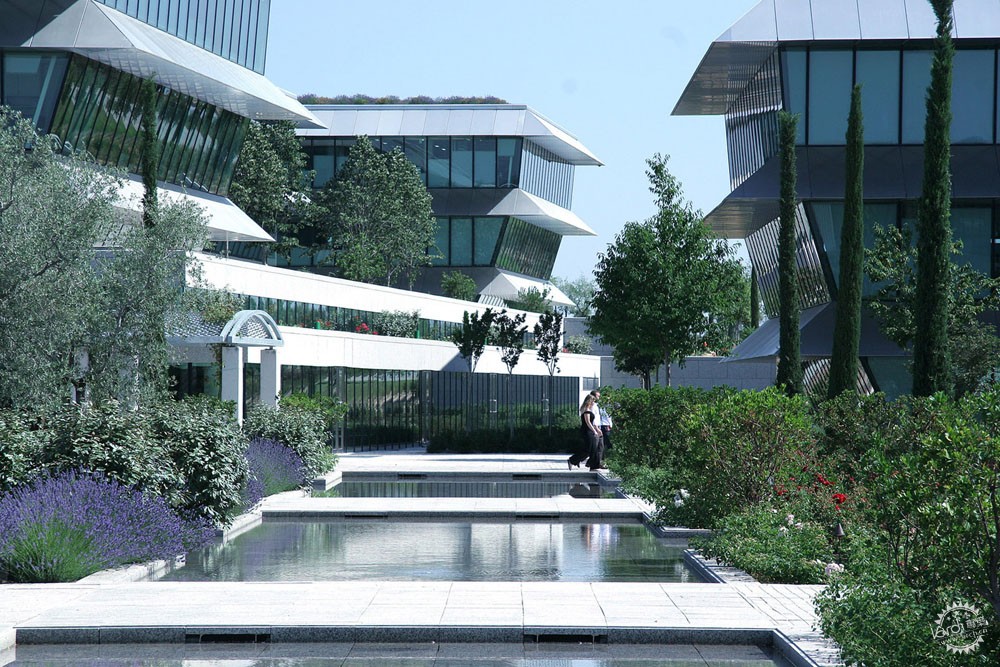
Headquarters of Bank Santander Campus, Madrid, Spain, 2005 © Kevin Roche John Dinkeloo and Associates
Vladimir Belogolovsky(下文称为VB):你的名字发音有些不同,有人会读成“sh”,有人会读“ch”,通过你的姓氏,你已经表达得很清楚了,应该是“ch”。
Kevin Roche(下文称为KR):是的,我是爱尔兰人。当英国南威尔士诺曼人入侵爱尔兰时,他们会用法文说“sh”,而我在法国工作时,他们也是这么说的,但是我会告诉他们,那应该念“ch”。
VB:你的父亲是你的第一位客户是吗?
KR:是的,在战争之前,他和大约500位农民合作建立了一个农民合作社,这些农民们会带着牛奶来制作奶酪和黄油。他也参与了许多建筑项目,当时我还很年轻,他就让我设计几座建筑,其中就有奶酪仓库。
我从小在爱尔兰南部成长,在那里几乎没有建筑师,只有工程师,当地人认为,设计建筑是一件奇怪的事情。当我开始上学,我在学校图书馆看书,碰巧看到了罗斯金的《建筑的七盏明灯》,这让我开始对建筑产生兴趣。又一次,我决定设计一座教堂,因此我画出了十字平面,在我认为这看起来比较霸气。但是当我给朋友看时,他说:“难道你不知道每座教堂都是十字形式吗?”(笑)
Vladimir Belogolovsky: Your name is pronounced differently – some say it with “sh” sound and others with “ch,” but you already made it clear by stating your first and last name. So it is Roche with a “ch.”
Kevin Roche: Yes, I am Irish. When Normans invaded Ireland they would say Roche in French (with a “sh”) and when I worked in France I was often called that way, but I say Roche (with a “ch”).
VB: It was your father who became your first client, is that right?
KR: Yes. Before the War, he started a farmers’ coop with about 500 farmers who would bring their milk to make cheese and butter. He was engaged in a lot of building projects and when I was in my teens, he asked me to design several of them. One was a cheese storage warehouse.
I grew up in the South of Ireland and no one in that small town had ever heard of an architect or what architects do. They heard about an engineer, but not an architect. The idea of designing buildings sounded very strange to them… but when I went to boarding school I started reading books in the library and came across The Seven Lamps of Architecture by John Ruskin. That started my interest in architecture. Once I decided to design a church during study hour and I drew a church plan in the form of a cross. I thought it was absolutely brilliant. But when I showed it to my friend, he said: “You eejit, don’t you know that every church is designed in the form of a cross?!” [Laughs.]

Cummins Engine Company, Columbus, Indiana, 1973 © Kevin Roche John Dinkeloo and Associates
VB:很厉害!
KR:还有另一个项目,是奶酪制造的副产品。这种产品一般都被扔掉,但是我父亲决定用来喂猪,因此我需要设计一座养猪场,那时候我才17岁,啥也不干到处跑。我的设计极具功能性,主要以养猪场的工作流程为基础。后来我也负责监督施工。在建造一面混凝土墙体的时候,我让工人一直增加高度,结果它突然塌了,于是这也是我学到的另一课。(笑)
VB:1945年,你从都柏林大学毕业之后,你就在都柏林工作,后来在伦敦又与现代主义建筑师Maxwell Fry合作。在1948年,你申请了哈佛、耶鲁、伊利诺工学院的硕士研究生,然后都被录取了。那么你为什么会选择密斯的学校而不是去哈佛学习?毕竟格罗皮乌斯曾经是Maxwell Fry的合作伙伴。
KR:我很想向密斯学习。在战争期间,国家之间几乎没有交流,因此我没有看到密斯的作品,只是在书中感受,我觉得他很了解自己所做的东西。相反,我反而没感觉到英国人是否知道自己在做什么。我记得Maxwell说过:“噢,这么做不是很有趣吗?”
VB:所以你觉得英国人很让人头疼。
KR:建筑不仅仅是乐趣,也是一件严肃的事情,密斯非常严肃,因此我很想见到他。我不知道他们为什么录取我,但是我的确考上了。这个班级只有12人,都来自不同的国际。密斯坐在椅子上,拿着雪茄说:“做这件事别无他法。”他很严肃,也对自己的想法很清楚,这让我很受启发,某种程度来说,这来源于古典主义。我能理解是因为我受过古典主义教育,而他的建筑其实也来源于古典主义。
VB: What a discovery!
KR: Then I got another project. There is a by-product of cheese making called whey. It is usually thrown away, but my father decided to feed pigs with it. So he asked me to design a piggery for several hundred pigs because I was a 17-year-old kid running around all summer doing nothing. My design was very functional, based on how the pigs would circulate and be fed. Then I supervised the construction. We were building a cement block wall and I kept asking the builders to build it higher and higher… until it suddenly collapsed… So I learned another lesson. [Laughs.]
VB: After graduating from the University College in Dublin in 1945, you worked in Dublin and then in London with Modernist architect, Maxwell Fry. In 1948, you applied for graduate studies at Harvard, Yale, and Illinois Institute of Technology and were accepted at all three schools. Why did you then choose to study under Mies van der Rohe at the IIT and not Gropius at Harvard, who was at one point Maxwell Fry’s partner?
KR: I really wanted to study with Mies. During the War, there was very little communication between countries so I didn’t see any buildings by Mies, but I read about him in the Architectural Review and I thought of him as somebody who really knew what he was doing. I didn’t have a sense that the English knew what they were doing. I remember Maxwell saying: “Oh, wouldn’t it be fun to do this or that?”
VB: So you thought that the English were confused.
KR: Architecture is not just fun. It is a very serious business and Mies was really serious about it, so I was very interested in meeting him. I’m not sure why they accepted me, but they did. It was a very small class of just twelve students. Almost everybody was from a different country. It was very interesting. And there was Mies, seating leisurely in a chair with his long cigar, saying: “This is the way to do it and there is no other way to do it.” He was very serious and very clear about his views. It was very enlightening. In a way, it was rooted in classicism. I understood it because I was trained in classical architecture and his architecture is classical in its own way.
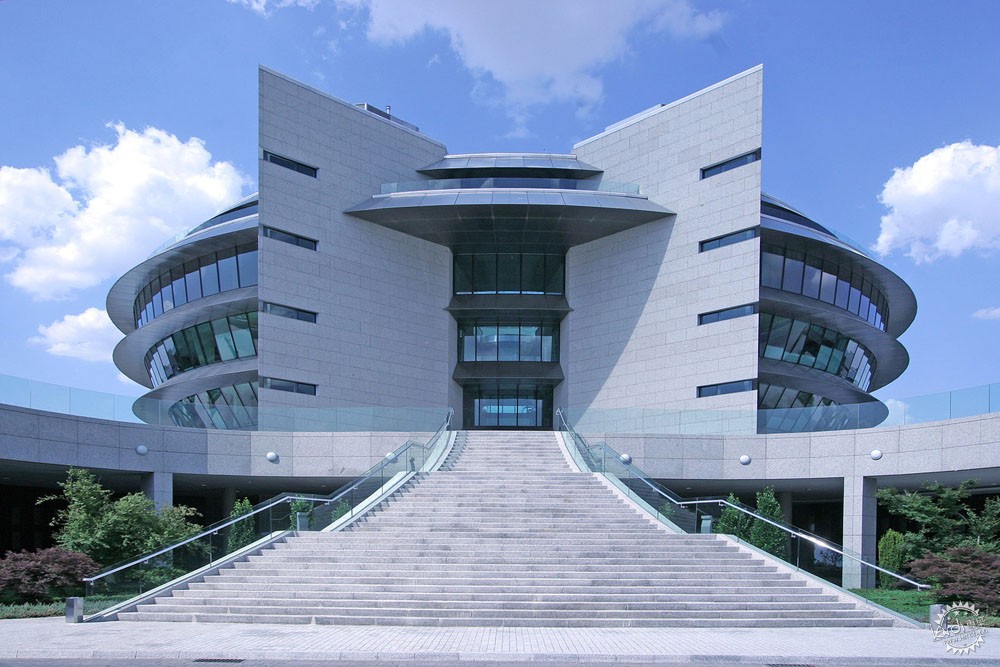
Headquarters of Bank Santander Campus, Madrid, Spain, 2005 © Kevin Roche John Dinkeloo and Associates
VB:然后呢?
KR:他的作品与人无关,古典建筑也与人无关,这只是一种仪式感,但是并不是人的仪式感。建筑应该是像包豪斯那样的纯粹几何。这不关乎社区感的创造,也不关乎个体生命的丰富性。
VB:在密斯的课堂中,你应用了坡屋顶,这非常勇敢,他是否有嘲笑你?
KR:我这样做是为了抗议,他用德国口音说:“你可以这么做,但是我不会这么做。”
VB:他不喜欢解释。
KR:也不是,他非常棒,我很崇拜他。他给建筑界带来了全新的感知方式。他的作品思路非常正确,在和他相处的6个月时间里,对我来说获益匪浅。
VB: How so?
KR: His work had nothing to do with people. And classical architecture has nothing to do with people. It is a celebration of something else. It is not a celebration of people. It is pure geometry just like the Bauhaus. It is not about creating a sense of community or how to make the life of an individual richer.
VB: I read how you dared to use a pitched roof in your design in Mies’ class. He must not have been amused about that.
KR: Well, I kind of did it as a revolt. He looked at me and said with a heavy German accent: “You could do dat. But I would not do dat, you know.”
VB: He did not have a habit of explaining things.
KR: No, but he was wonderful. I am still a big admirer of him. He really brought clarity to architecture and changed the way architecture was perceived. His architecture was the right response from a structural and mechanical point of view. I stayed with him for about six months. That was enough for me.
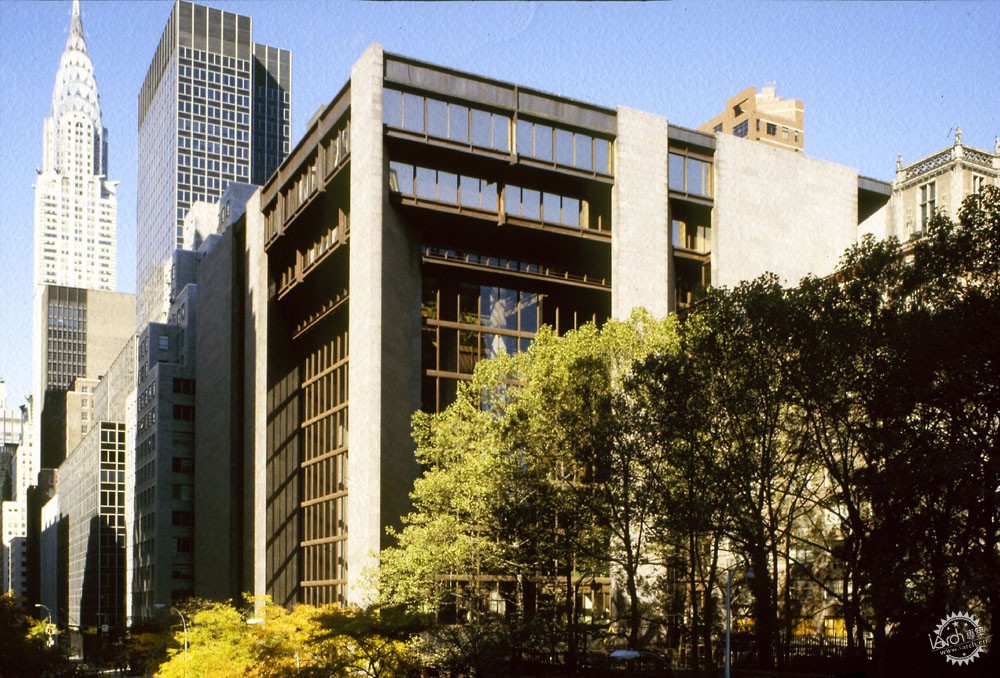
Courtesy of KRJDA
VB:那么密斯教给你的主要内容是什么?
KR:他说传授的内容只是个开端,并不是结尾。生命还在继续,建筑师有巨大的责任来帮助人们和平共处。
VB:在此之后,你并没有再回过学校?
KR:是的,我直接开始工作了。我去纽约是因为我想要参与Harrison & Abramovitz的联合国大楼项目。首先,我只是帮忙协助他们,后来才开始绘图。
VB:在沙里宁的密歇根工作室里,你呆了超过10年,在1954年,你成为他的主要设计合作者,一直到1961年他去世。那么他是对你影响最大的人物吗?
KR:是的。上世纪50年代是一个非常有趣的时代。由于汽车产业,底特律的建筑发展非常活跃。我们当时的项目是建造通用汽车中心,这也是当时全国最大的项目。其设计理念以密斯理论为基础。整个建筑非常简约。麻省理工学院的礼堂也是一个好项目,从沙里宁那里我学到的是有条不紊的思路,并且不断地提问与研究。当你坚持做下去,想法也随之而来。但是这要以大量的研究为基础。
VB: And what would you say was the main lesson from Mies for you?
KR: Well, what he did was a good beginning, but it wasn’t the end of the story. We are still living. Architects have a tremendous responsibility to help people live in peace with each other.
VB: You never went back to school after Mies…
KR: No, I went straight to work. I went to New York because I wanted to work on the United Nations building at Harrison & Abramovitz. First, I was just helping file the drawings and then they let me draw.
VB: You then spent more than a decade as a designer in the Michigan office of Eero Saarinen, becoming in 1954 his principal design associate and assisted him on all of the projects from that time until his death in 1961. Was he your most influential mentor?
KR: Definitely, he really was. The 1950s were a very exciting time. Detroit then was much more active in terms of building than New York or Chicago because of the automobile industry. We were working on the General Motors Technical Center, which was the biggest project in the country. It was based on Mies’ philosophy. It was all about precision. The MIT Auditorium was also very exciting to work on. What I really learned from Eero was to be very methodical, keep asking questions and do a lot of research. When you keep doing it again and again, finally the idea comes. But it is based on a lot of research.
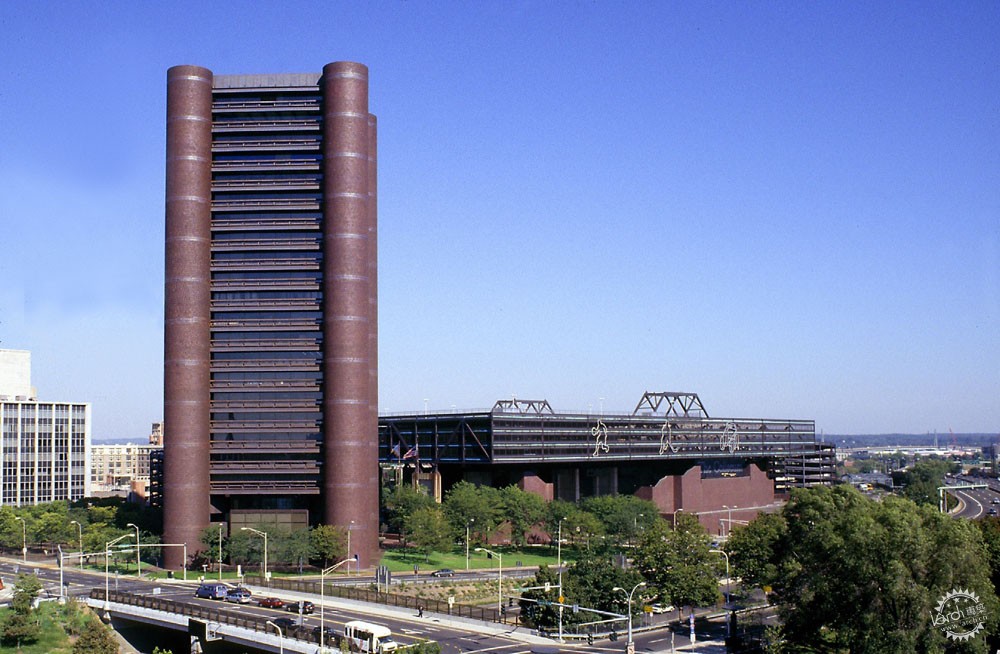
Headquarters of Knights of Columbus, New Heaven, Connecticut, USA, 1969 © Kevin Roche John Dinkeloo and Associates
VB:在研究之前他没有想法吗?还是处于偶然?
KR:很少。
VB:TWA航站楼怎么样?它的形式很纯粹,看起来就像是灵光一现。
KR:是的,这是极少数了。当然,耶鲁大学冰球馆的很相似。我们在这些想法之前也做了许多研究。他的策略有条不紊,同时也有着很好的逻辑体系。我想,形式就如同音乐,你试着创作,旋律便已出现。同样的,你按照逻辑进行工作,然后忽然灵光乍现,突然所有事情都敲定了。
VB:1966年,在完成沙里宁的项目之后,你和John Dinkeloo将事务所的名字“Eero Saarinen and Associates”改成了“Kevin Roche John Dinkeloo and Associates”,你能就此谈一谈吗?
KR:在当时我们完成了沙里宁的所有项目,然后开始着手进行诸如奥克兰艺术博物馆等新项目。为了生存,我们必须有新项目做,否则事务所就要倒闭了。在沙里宁的最后一个项目杰佛逊国土扩张纪念碑项目完成之后,我们就改变了事务所的名字。后来John Dinkeloo负责施工,而我负责设计。
VB:你是否认为建筑是环境的延续,而非沙里宁的标准美学理念?
KR:两者皆是的。你不能不把建筑看做是美学理念,因为它确实时一种没血。但是建筑又不仅如此。社区感也很重要。另外还有一些抽象的概念。一些东西建立之后,你如何想象他们是什么呢?建筑关乎艺术,也关乎社会服务。
VB: Do you suggest that ideas would not come to him before any research? Just out of the blue?
KR: Rarely.
VB: What about TWA? A pure beautiful form… It seems like the idea came first.
KR: Yes. That was one of the few examples. And, of course, the Yale Ice Rink was done very similarly. Although we did a lot of research before these ideas would come. He did have a very methodical approach. He had a good discipline to examine every aspect. I suppose, form generating is similar to music – you try to compose music and suddenly the melody comes. Here is the same. You work on a form and nothing fits until you see a vision and suddenly everything falls into a particular composition.
VB: In 1966, upon the completion of Saarinen's projects, you and John Dinkeloo changed the name of Eero Saarinen and Associates to Kevin Roche John Dinkeloo and Associates. Could you talk about restructuring the firm then?
KR: At that time, we completed all projects started by Eero and worked on new projects such as the Oakland Museum of Art and the Ford Foundation. We thought that in order to continue, we had to get new work. Otherwise, the firm would die and we would not be able to complete the work that was started. It was already a different firm. We changed the name when the last of his projects, the Jefferson National Expansion Memorial in St. Louis, Missouri, was completed. John Dinkeloo [1918–81] was in charge of construction and I was the lead designer.
VB: Do you see buildings as an extension of a larger environment, as opposed to Saarinen’s idea of standalone, beautiful objects?
KR: Well, both. You can’t avoid seeing buildings as beautiful objects because that is what they are. But there should be more than just that. The community aspect is very important. There is still the abstract… Something has to get built and how do you imagine what that is? Architecture is still an art, as well as social service.
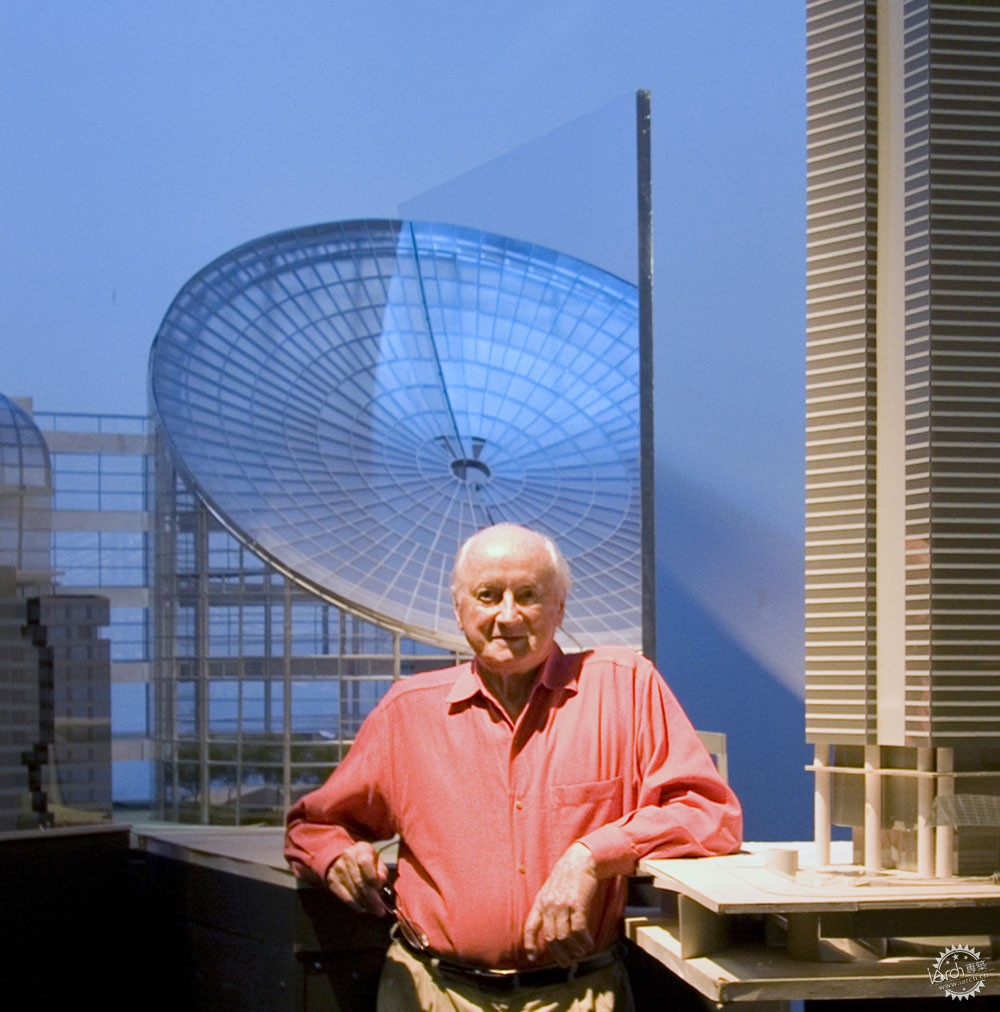
Courtesy of KRJDA
作者简介:
VLADIMIR BELOGOLOVSKY是纽约非营利Curatorial项目的创始者,他在纽约库伯联盟学院学习建筑,并且著有9本著作,其中包括、《New York: Architectural Guide》(2019年)、《Conversations with Architects in the Age of Celebrity》(DOM, 2015)、《Harry Seidler: LIFEWORK 》(Rizzoli, 2014)、《Soviet Modernism: 1955-1985》(TATLIN, 2010)。另外还有许多大型展览,即2012年的世界巡回展览“Harry Seidle:绘画建筑”,2017至2018年的“Emilio Ambasz”、2016年起的“Sergei Tchoban”,还有2008年威尼斯建筑双年展俄罗斯展馆的“象棋游戏”。 Belogolovsky还是柏林建筑杂志“SPEECH”的美国记者,在2018年,他是北京清华大学的受邀学者,并且曾经在超过30个国家的高校和博物馆进行演讲。
Belogolovsky的专栏“理念城市”为ArchDaily的读者介绍了他也世界知名建筑师的对话,自2002年起,他采访过超过300位建筑师,而这些密切会谈也成为了场地的特定装置,这些装置由对话记录和一些言论构成。
VLADIMIR BELOGOLOVSKY is the founder of the New York-based non-profit Curatorial Project. Trained as an architect at Cooper Union in New York, he has written nine books, including New York: Architectural Guide (DOM, 2019), Conversations with Architects in the Age of Celebrity (DOM, 2015), Harry Seidler: LIFEWORK (Rizzoli, 2014), and Soviet Modernism: 1955-1985 (TATLIN, 2010). Among his numerous exhibitions: world tours of the work of Harry Seidler (since 2012), Emilio Ambasz (2017-18), Sergei Tchoban (since 2016), Colombia: Transformed (American Tour, 2013-15), and Chess Game for Russian Pavilion at the 11th Venice Architecture Biennale (2008). Belogolovsky is the American correspondent for Berlin-based architectural journal SPEECH. In 2018, he was a visiting scholar at Tsinghua University in Beijing. He has lectured at universities and museums in more than 30 countries.
Belogolovsky’s column, City of Ideas, introduces ArchDaily’s readers to his latest conversations with the most innovative international architects. Since 2002, he interviewed over 300 architects. These intimate conversations are featured in the curator’s ongoing site-specific installations made up of voice recordings and thought-provoking quotes.
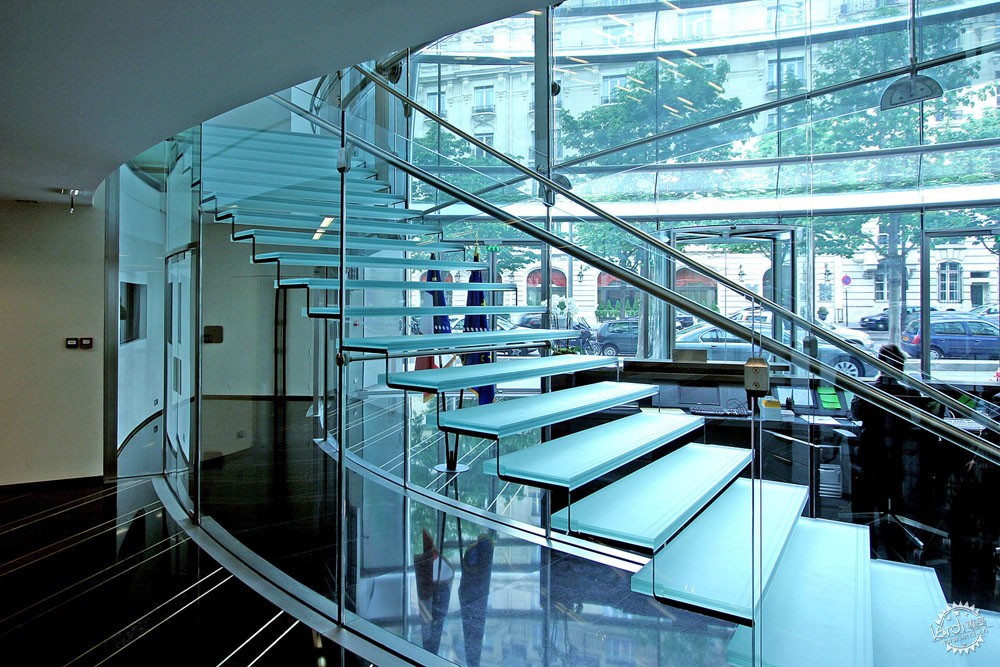
Headquarters of Bouygues SA Holding Company, Paris, France, 2002 © Kevin Roche John Dinkeloo and Associates
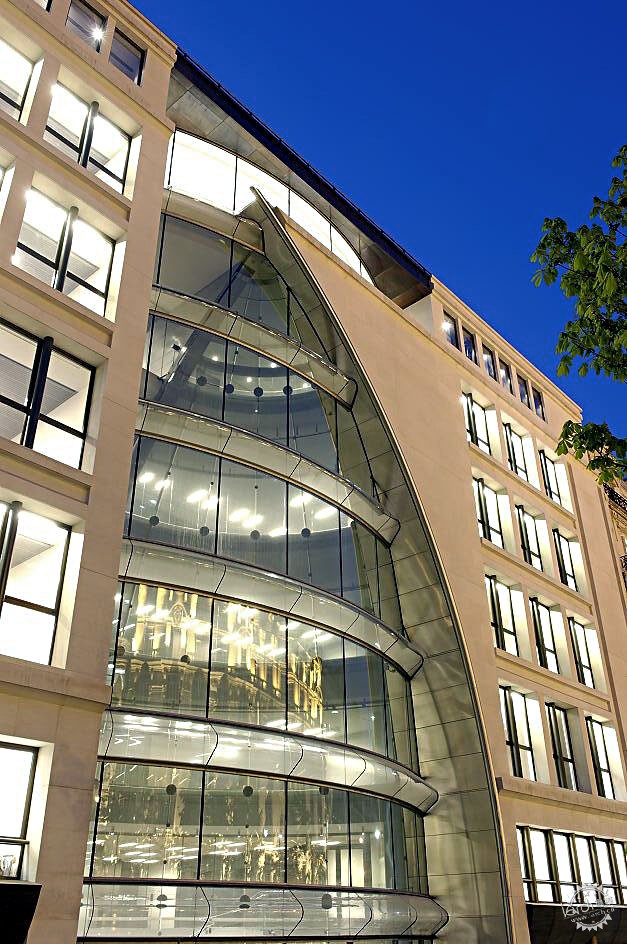
Headquarters of Bouygues SA Holding Company, Paris, France, 2002 © Kevin Roche John Dinkeloo and Associates

Headquarters of Bouygues SA Holding Company, Paris, France, 2002 © Kevin Roche John Dinkeloo and Associates
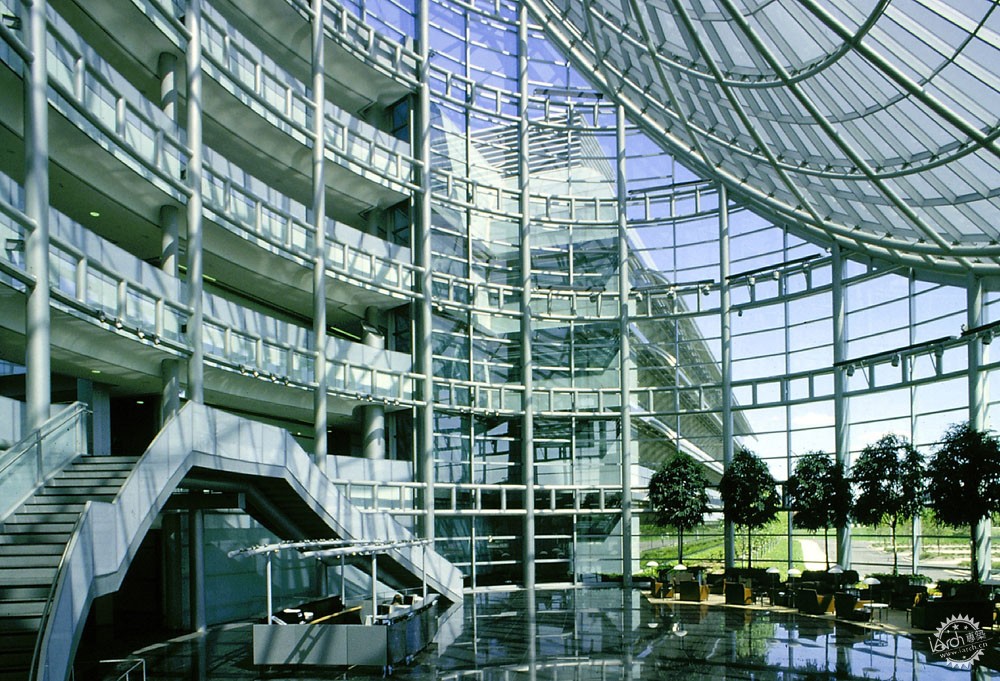
Courtesy of KRJDA
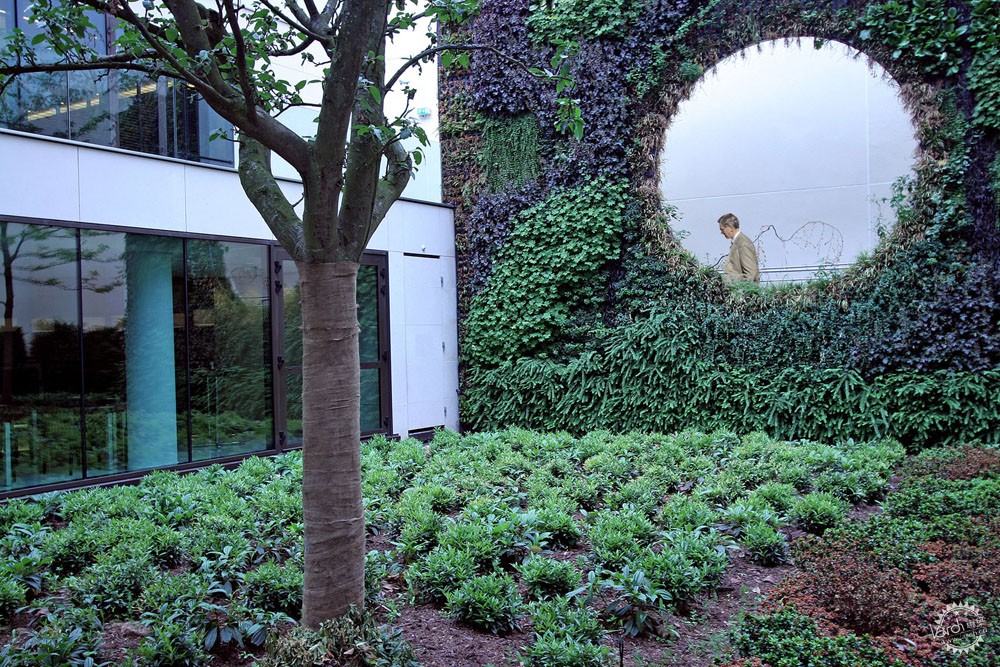
Headquarters of Bouygues SA Holding Company, Paris, France, 2002 © Kevin Roche John Dinkeloo and Associates
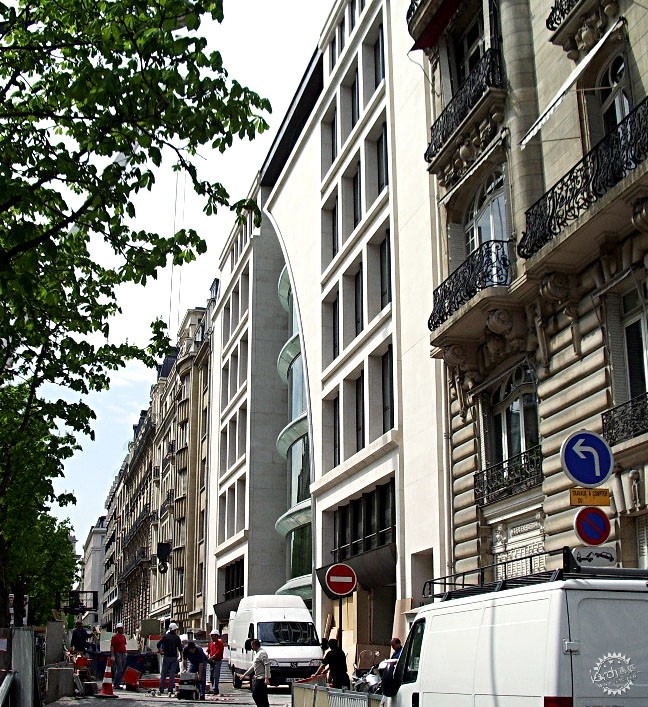
Headquarters of Bouygues SA Holding Company, Paris, France, 2002 © Kevin Roche John Dinkeloo and Associates
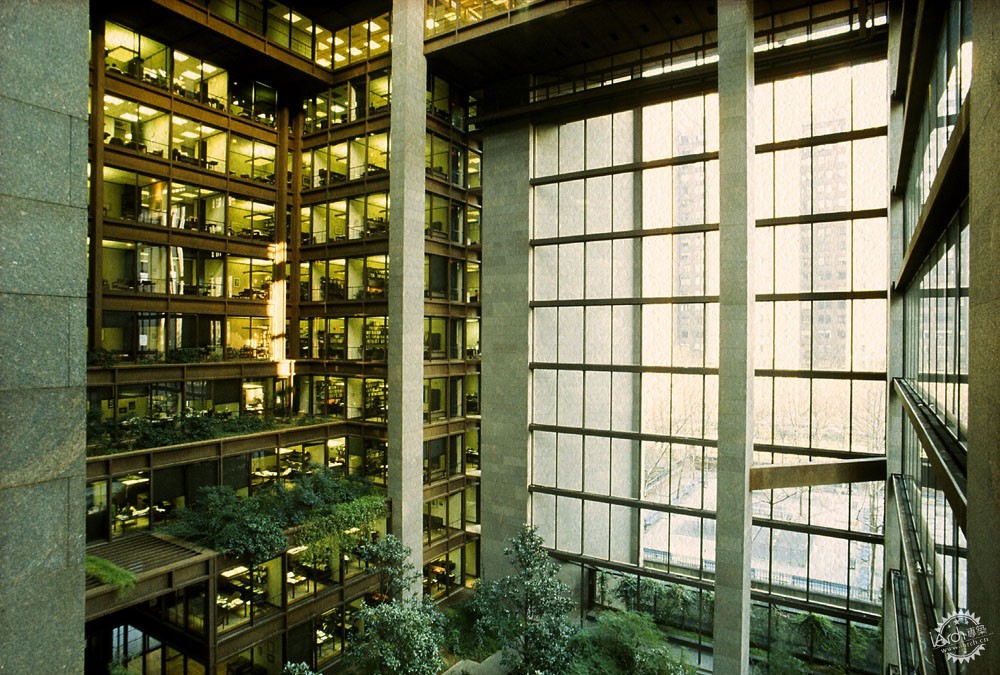
Courtesy of KRJDA
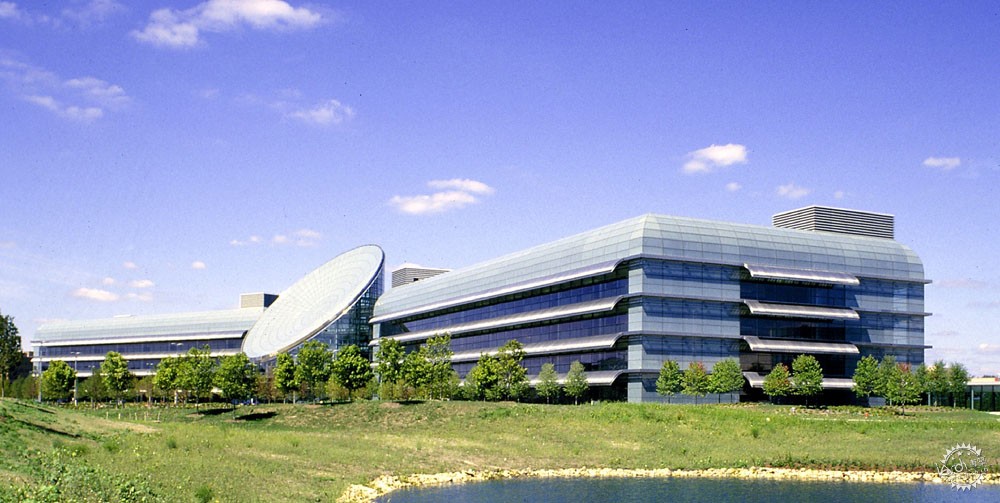
Lucent Technologies Research Center, Naperville, Illinois, USA, 2001 © Kevin Roche John Dinkeloo and Associates
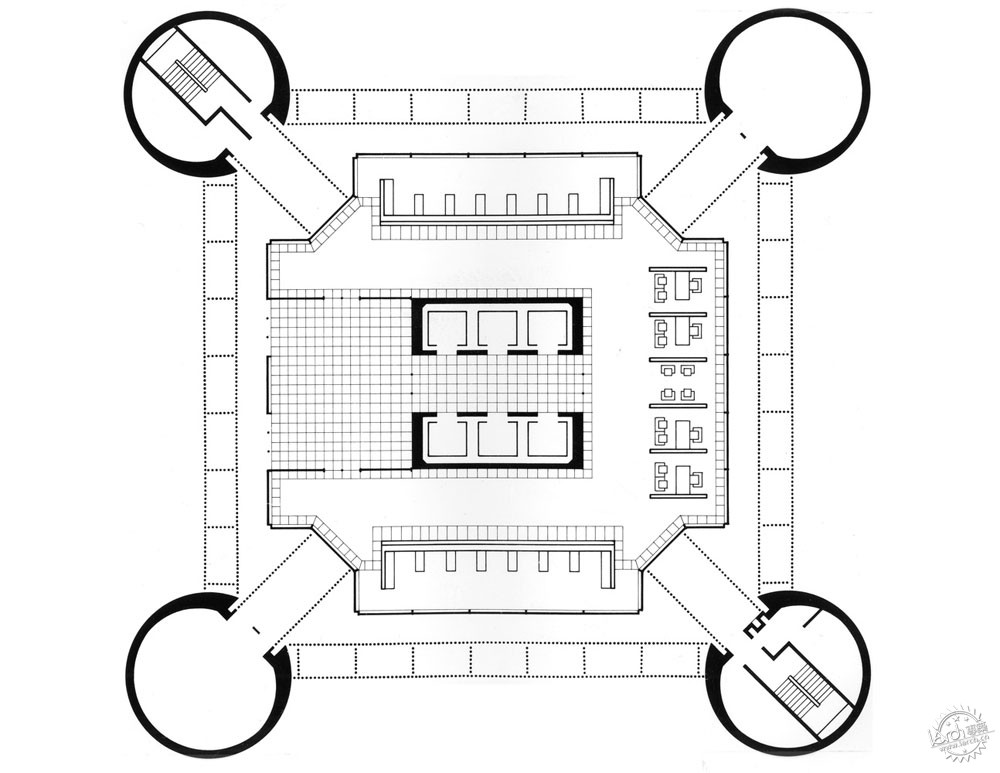
Courtesy of KRJDA

Courtesy of KRJDA
|
|
